My first seedling with variegated foliage. I’m hoping it maintains the trait as it matures.

Nice, Rob. Was Verschuren one of the parents?
Cathy
Central NJ, zone 7a
Variegation like that occasionally shows up without any assistance or use of other variegated types. Schoener’s Nutkana produced many variegated seedlings, all of which were highly susceptible to rust and most were quite weak. All were eventually dumped. I’ve not had a variegated seedling yet which would survive without extreme efforts on its behalf. It makes sense they would be weaker and more disease prone. Absence of “green” is a reduction in the plant’s ability to feed itself. Any reason for the variegation is going to weaken it compared to the same plant with solid green foliage. John Clements produced a mini called Britestripe which had variegated foliage and flowers. It regularly reverted to solid green foliage which, of course, was more vigorous. The only way to maintain the variegated foliage was to continually remove the solid growth, which is what he advised.
Makes sense Kim. I’ll see what becomes of this one.
This is a seedling from seeds that I received from Jackie. ((R. calocarpa x R. nutkana) x (R. acicularis x OP)) x (Cafe Ole x Bayse’s Legacy)
I’ve had albinos but not stripies. Kim is right. Weak plant. In a complex hybrid cross I’d say it is an incompatibility of some of the parts going into making the green, the chloroplast. During development of a leaf, some of the cells lose their grip on whatever it is that puts the chloroplasts together correctly. this lineage of those cells leads to a sector with no color. It might flip back again. Could be a transposon in one of the genomes that is held under control where it is normally, originally, but loses the regulation when it gets into a different background of another species.
Why is no one proposing that the seedling may be virused?
Thank you for this information. One of my 2014 seedlings (Moondance x Alec’s Red) has variegated cotyledons and the first true leaves are dark green with slight variegation… not as much as Rob’s photo shown above. I will let it grow on a bit more to see if the next set of leaves also have variegation, then post a photo if they do.
Cathy
Central NJ, zone 7a
Would that be a virus passed on from a parent Henry?
To Rob Byrnes, yes, that is one of the ways viruses spread.
Here is an updated pic of the variegated seedling and two other seedlings showing some ‘different’ looking leaves. These two have ‘marbling’ on the leaves. Texture and leaf shape are a little different too.
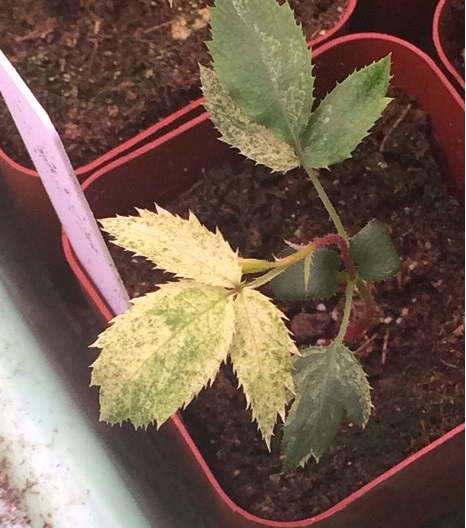
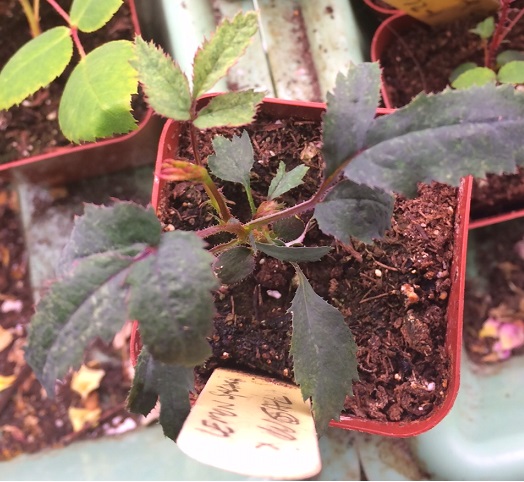
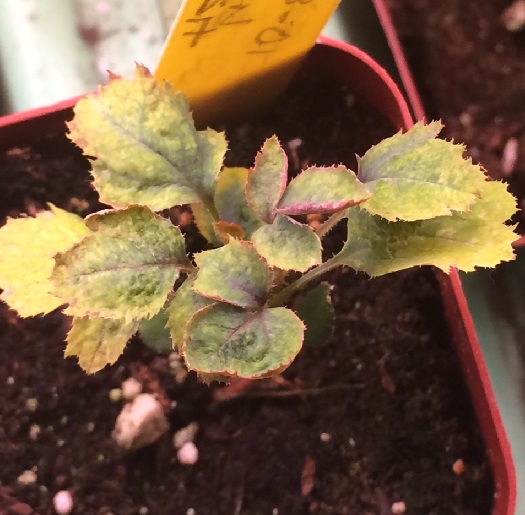
This one seems to be thriving so far and has even developed a bud which should open in a week or so. The color pattern is not really variegated but I’m not sure how to describe it…spots, buckshot pattern… There is a sibling to this one that also has the color variation. I’m guessing that this would support Henry’s comments about this being possibly due to a virus. I really hope that these two will thrive and do well outside.
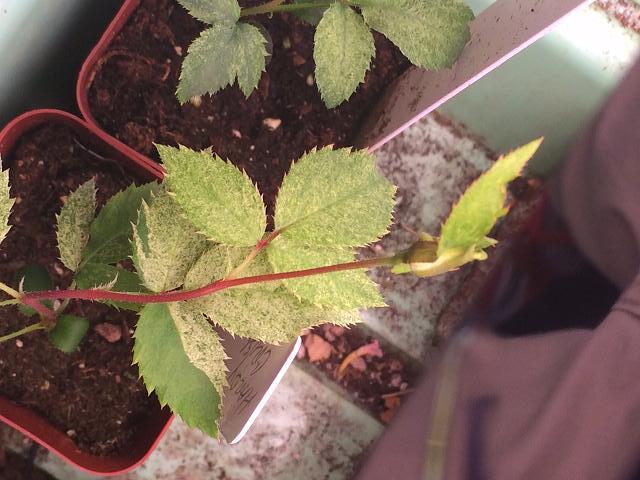
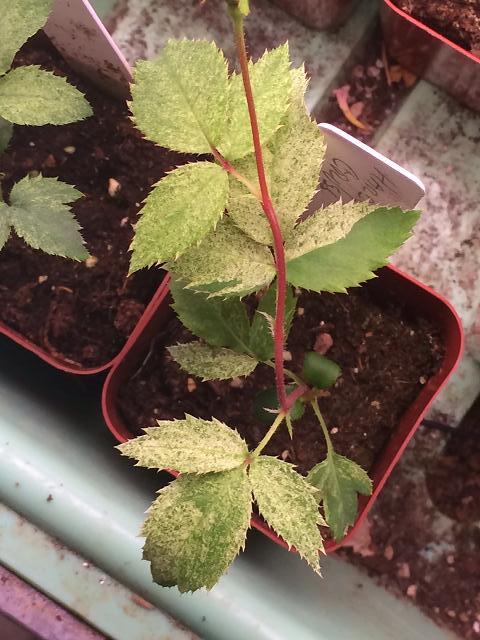
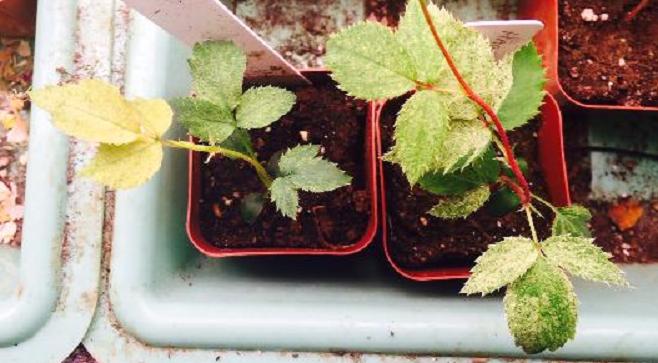
I think speckled is a better description than variegated.
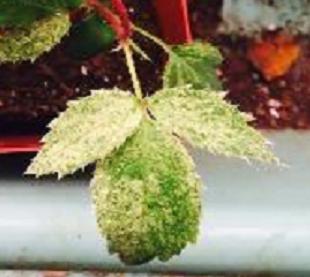
Are you considering sending it to be virus tested?
Henry,
I hadn’t thought about going that route yet. I don’t know anything about viruses that might produce these results and need to do some research. Can I ask you, is there a downside to a virus where the only symptom Is speckled leaves (if indeed that is the only symptom)? I believe there are some tulips that have color stripes due to virus that seem to do fine.
How would I go about having these seedlings tested? Thank you Henry.
Hi Rob,
I believe in regard to the early variegated tulips, they were virused and in fact as the demand increased, someone discovered that if they cut up a variegated bulb and rubbed it against a cut solid colored bulb, that would cause the solid colored bulb to produce variegated flowers. However, the virused bulbs were weakened. That was a family secret kept for many years.
The present tulip bulbs for sale that are variegated are marked as virus free in the catalogs. I guess somewhere along the line, color breaks developed naturally and were then used in breeding as in roses
I especially love the colors of the leaves in your first rose. Lovely.
Jim
Jim,
That’s interesting information about the stripes in tulips. Thank you for that. Hopefully these two seedlings will thrive.
Bob Byrnes, my virus information is at:
My suggestion to get it tested is for scientific purposes - so that the scientists can determine which viruses are seed transferred.
Henry,
Thank you for the link. When I click on it it brings me to a google sign in page. Is that a good link?
I would be happy to provide plant material to any scientist that wants to study any virus that may have been passed on. I would just need to know where to find a scientist that is performing that kind of research. I look forward to accessing your virus page and doing some reading.
Bob, thank you for telling me that the link I gave could not be opened by others. I have changed it and checked it with my wife’s computer. It should work now.
The two groups that come to mind are the Professor Ben Lockhart’s group at the University Of Minnesota and the Professor Ioannis E. Tzanetakis’ group at the University of Arkansas.
Henry,
Not knowing yet if this coloration of the leaves is due to a virus, would it be safe to say that depending on what virus it may turn out to be it might not necessarily be a bad thing if the plant thrives? Thank you.